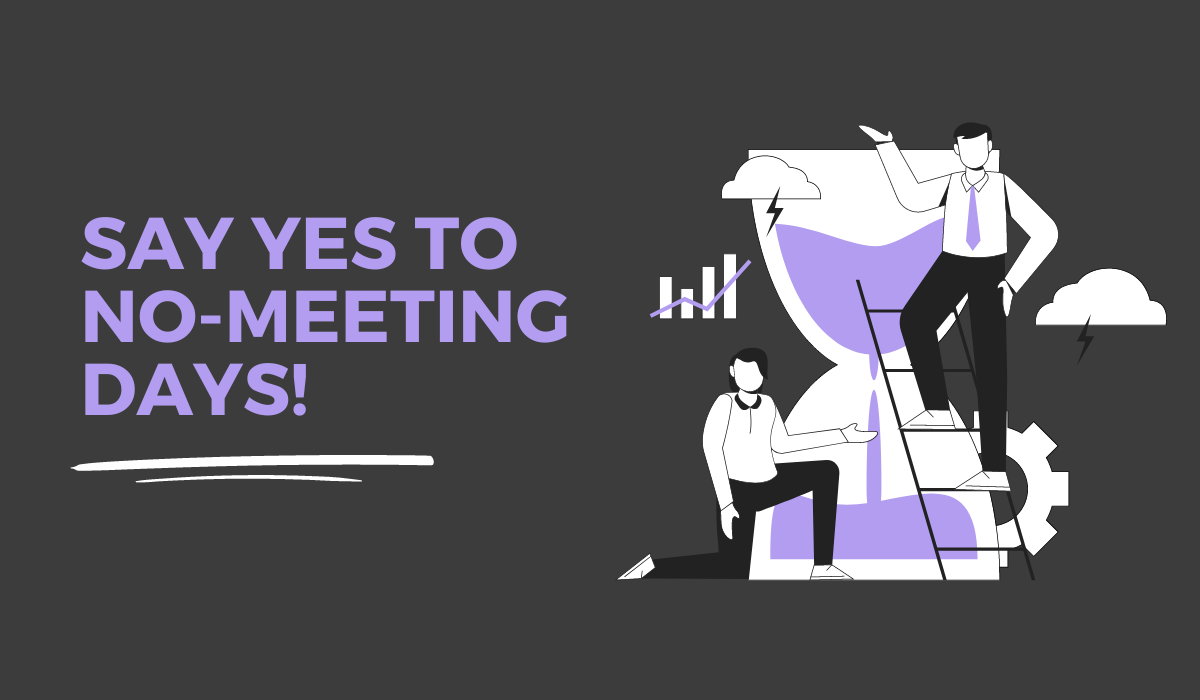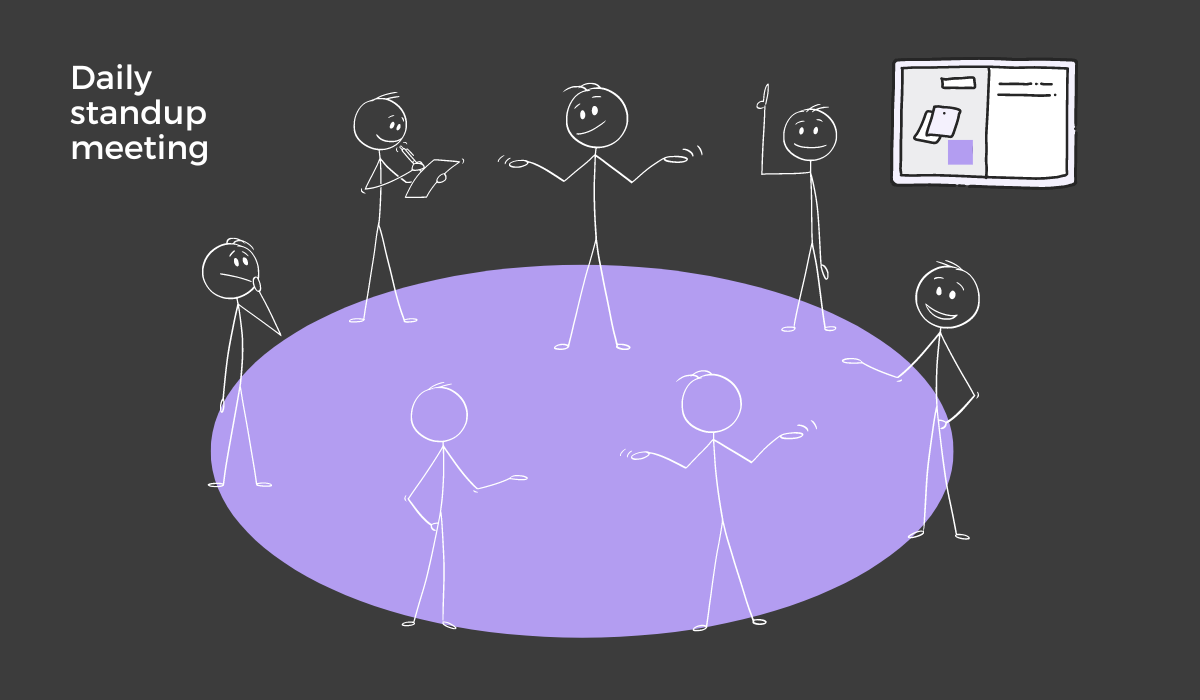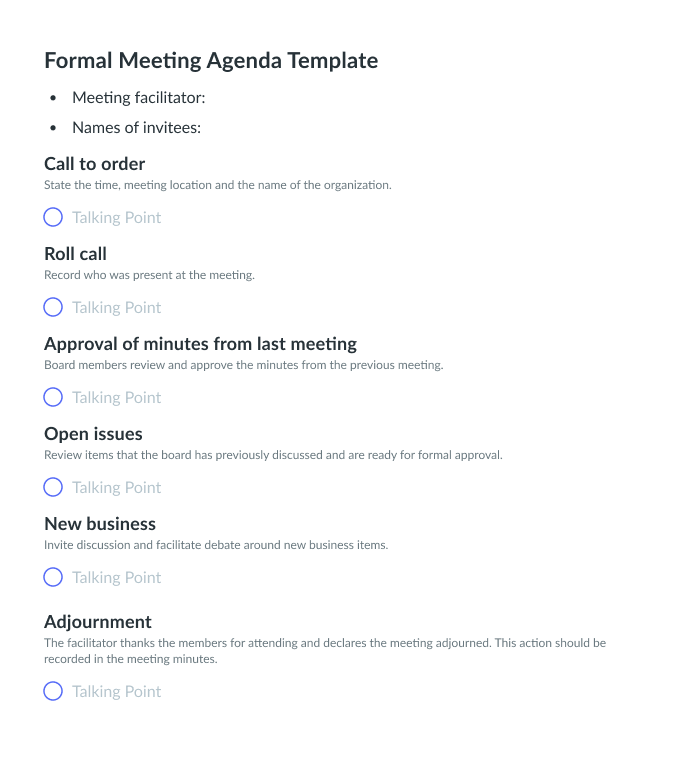
Are your meetings dragging on and on? Are they unproductive and unfocused? Do you find that your employees’ contribution stops at attending, rather than participating?
If you’re nodding yes to these questions, maybe it’s time to shake things up and change your meeting style.
In this article, we’ve compiled a few of our favorite resources to help you run your developer meetings in a way that’s truly valuable, productive, and creative.
Keep reading to learn more.
Table of Contents
Running effective developer meetings
On the Basics of Running an Effective Meeting
While there are many reasons why meetings fail, there are also many simple ways to make meetings more effective.
This article aims to teach you some of them by walking you through what to do before, during, and after a meeting.
The author Noran Azmy, a software developer at Google, has attended many meetings herself and knows what it takes to make one successful.

Get unreal data to fix real issues in your app & web.
That’s why in this article, she covers the basics of meeting etiquette, including setting the agenda, taking notes, and following up—as well as more advanced topics like how to take control in meetings and knowing when to interrupt when the discussion gets off track.
As an added bonus, each tip is accompanied by a practical example that illustrates how to implement it during a meeting.
As such, this article is a great starting point for new team leaders looking to make their meetings more effective—but also a good reminder for seasoned veterans who may have forgotten some of these tips along the way.
Setting an Agenda for Team Meetings
There are many different ways to run a meeting, but there’s one thing that’s almost universally agreed upon: it has to have an agenda.
Your team needs a path to follow, something that will keep everyone on the same page and focused on the main issues.
And this article will tell you everything you need to know about putting together a perfect agenda.
For example, finding the right template for the agenda can go a long way in making sure that your meeting runs smoothly, but if you also include team members in the process, you can rest assured that your employees are engaged and ready to tackle any issue that arises during the meeting.
The article is packed with useful advice like this and is well worth reading for that reason alone.
All in all, it’ll provide you with a wealth of ideas to create an exceptional agenda for your next meeting—one that ensures it goes without a hitch.
Understanding the importance of one-on-one meetings
Making One-on-One Meetings More Productive
When it comes to planning one-on-one meetings, good team leaders know that the devil is very often in the details.
It’s not enough to just schedule a meeting and hope for the best. You need to prepare in advance, setting the stage for a productive discussion.
That’s why reading this article from the Harvard Business Review should be a must—it’s a treasure trove of experts’ advice, dos and don’ts, and tips that will help get the most out of your one-on-one meetings.
For instance, the article suggests, among other things, to begin each meeting with a little win to put people in a positive mindset.

If you plan on discussing professional development with your employee—which requires thinking time on their part—let them know in advance so they can come prepared.
When it’s time for the one-on-one, think about how you can make a positive impact on this person’s life—and not just how to get through another meeting.
This article will tell you how to achieve all this and more, as it also cites two case studies that will help you get a better understanding of how to use this type of meeting to its fullest potential.
Employees That Feel Heard Are More Motivated
In this compelling article, tutor and writer Melanie Curtin uses her own experience to demonstrate the positive effect that quality one-on-one interactions with a superior can have on an employee’s motivation.
She highlights the importance of being a good listener and describes the ways in which it benefits employees and managers alike, explaining how being heard leads to an increase in the overall productivity of the employees and reduces turnover.
With all this convincing evidence, it’s hard not to recommend this article to any team leader who wants to improve their communication skills.
While the article doesn’t provide specific advice on how to be a better listener or handle difficult conversations, it does offer an employee’s perspective on these topics, which makes it a valuable read.
Using tools and resources to improve your team meetings
Resources for More Productive Meetings
When working in a remote environment, it’s important that team members can communicate with one another effectively during meetings.
This article discusses the importance of using a variety of resources to facilitate communication during meetings and provides an overview of five of the most useful tools for this purpose.
In addition to popular options such as Slack and Google Hangouts, the article also introduces some lesser-known tools such as Fuze (for video conferencing), MeetingBurner (online meetings), and Nutcache (project management).
In short, this article will give you an overview of the best communication tools for remote meetings, so you can make an informed choice for your team.
Collaboration and Meeting Management Tools to Check Out
If you want to improve the effectiveness of your meetings, then you may want to consider using meeting management tools.
However, choosing the right one can be challenging because there’s a wide array of tools out there, and many of them are quite similar.
This article will save you the trouble of having to hunt around for the perfect one by providing an overview of some of the most popular tools on the market today.

From tools such as Jotform and WebEx to Lucid Meetings and Stratsys Meetings, the article looks at the main features of each and compares their prices, helping you decide which of these meeting management tools is best for you and your budget.
Determining which meetings are truly necessary
Consider Introducing No Meeting Wednesdays
When you’re a team leader, it’s easy to fall into the habit of scheduling meetings for every conceivable reason—after all, meetings help people stay on the same page and ensure that everyone is on the same wavelength.
But as every developer already knows, too-frequent meetings can be a real drain on productivity.
This article suggests a way around it—setting aside one day each week where you don’t schedule any meetings at all, and instead, everyone focuses on getting their work done.
The author, Kasey Fleisher Hickey, uses her own experience with No meeting Wednesdays at Asana to illustrate this concept.

The author isn’t rigid. She acknowledges that meetings can occasionally be scheduled on Wednesdays—if they’re important enough.
However, she advises that this practice be kept to a minimum.
The main takeaway from this article is: give your team a day of uninterrupted work time and watch their productivity and happiness soar.
Therefore, if you’re interested in implementing this practice, this article will be more than a helpful resource.
The Meetings Your Development Team Actually Needs
Most software development teams run a large number of meetings. However, not every meeting is created equal.
Some need to be held regularly to keep the project on track, while others should only be scheduled as needed.
This article breaks down the various types of meetings in software development, ranging from sprint planning meetings to retrospectives.
For example, if you simply need to summarize the progress of a project, a standup meeting might be enough.
If there is, however, something bigger that needs addressing—such as discovering what went wrong in the sprint and trying to prevent it from happening again next time—then having a retrospective meeting instead would be more appropriate.
The author also goes into detail about meetings that you can conduct only occasionally, such as the ones that combine brainstorming, designing, and making decisions about implementing new features.
This is perhaps the most interesting part of the article as it provides a lot of insight into the design process, which makes it well worth reading even if you don’t manage people or have a background in software development.
Trying a different approach to meetings
Switch Up the Way You Run Your Daily Standups
Standup meetings are a part of every scrum team’s workday.
They’re an opportunity for each developer on the team to tell the others what they accomplished yesterday, what they’ll be working on today, and what obstacles they’re facing.
When it comes to running them, there’s a basic structure that most teams use: everyone stands in a circle, and each person answers questions about their progress.

But there’s no law that says you have to do your standups that way. There are plenty of other ways to run them—and this article lists 14 alternative formats and explains how each one works.
For example, you might want to try the walk the board standup format, which uses visual management boards and focuses more on tasks than individual reports.
Or the lean coffee format might be more suited for your team since it allows participants to vote on what they want to talk about.
According to the article, each of these standup meeting alternatives has its own pros and cons—it’s up to you to decide which option works best for your team.
If you’ve ever struggled with standup meetings or just looking for fresh ideas to keep them interesting, this article is full of tips that can help.
Creative Ways to Hold Meetings
When you think of the term meeting, what comes to mind?
Most people probably picture a room with a large table where employees sit, facing their manager as he or she dutifully goes over the agenda for the day.
Thankfully, there’s no need for meetings to be that boring anymore, as this article most creatively demonstrates.
It provides examples of how different companies introduced creative techniques to change the way their meetings are held, thus making them more productive and engaging, in the hopes of inspiring team leaders to think outside the box when planning their own.
The suggestions vary widely, from implementing the NOSTUESO rule—an acronym for No One Speaks Twice Until Everybody Speaks Once—to awarding the best employees with a novelty gift.
There’s nothing wrong with adding a dash of creativity to your meetings, and this article will give you a handful of clever ways to do so.
Conclusion
Anyone who has ever attended a meeting knows that the experience can be either disappointing or gratifying, depending on how things unfold.
There are plenty of ways to run a meeting that will leave everyone feeling like they wasted their time. But there are also ways to make every meeting more productive and worthwhile.
The resources that we shared in this article will, hopefully, help you do the latter, by giving you the guidance and ideas needed to fix some of the usual issues that hinder productivity and ensure that the meetings you plan in the future are as effective as can be.





